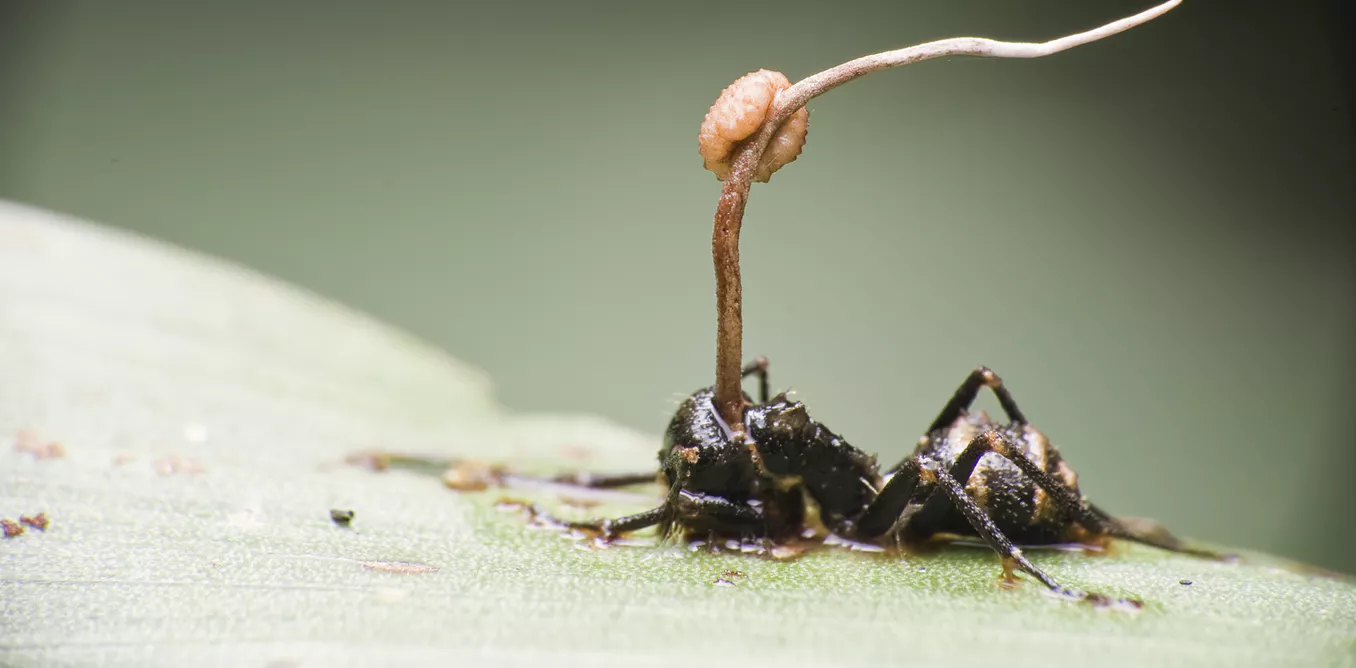
Parasitic fungi that take control of living insects
In a tropical forest, an ant has descended from the canopy away from her regular foraging trails and staggers drunkenly along a branch. Her movements are jerky and conspicuous. She twitchily moves forwards and suddenly starts convulsing with such ferocity that she falls from the branch onto the ground before resuming her erratic, zigzagging path. This is a “zombie ant”, and she’s unwittingly become part of the lifecycle of a parasitic fungus commonly known as Cordyceps.
Around noon, after several hours of climbing and aimless lurching, the ant is now no more than about 25 cm above the ground, crawling aimlessly on the underside of a sapling leaf where, without warning, she forcefully sinks her powerful jaws into one of the leaf’s veins, gripping it firmly between her tightly locked mandibles.
Within six hours, she is dead. After two days, white hairs bristle from between her joints and a few days later these have become a thick, brown mat covering the whole insect. A pinkish-white stalk starts to erupt from the base of the ant’s head and continues to grow. Within two weeks it has reached twice the length of the ant’s body reaching down towards the ground below.
Finally, the stalk will release its spores into the air, ready to float off and infect more unsuspecting ants.
The fungus disrupts the normal behavior of the ant through chemical interference in the brain, causing the infected ant to behave in ways that will improve the opportunities for the fungus to spread its spores and so reproduce.
The fungus grows throughout the body cavity of the ant, using internal organs as food while the ant’s strong exoskeleton serves as a kind of capsule, protecting the fungus from drying out, being eaten, or further infection.
Definitive evidence of “zombie-ant” behavior, dating to around 48m years ago, comes from fossilized leaves that show the distinct markings on either side of leaf veins left by the lock-jawed mandibles of infected ants.
In this age-old struggle for survival the ants have developed adaptations to protect themselves and their nests from fungal infections. By grooming themselves and socially cleaning each other, they remove potentially harmful spores before they can penetrate the skin and take hold. Some ants spray poison in their nests to act as fungicides and if that fails to stop an infestation, they partition their nests by sealing off contaminated chambers.
Zombie-like behavior in insects is also caused by many other types of parasites including bacteria and even other invertebrates. This raises fascinating questions about the nature of any organism’s true independence in what are undoubtedly highly complex interrelated living systems. Zombie-ants provide us with a glimpse into this intricately tangled web of molecular influences and behavioral adaptations. It leads us to wonder who, ultimately, controls whom?
 English
English Arabic
Arabic


